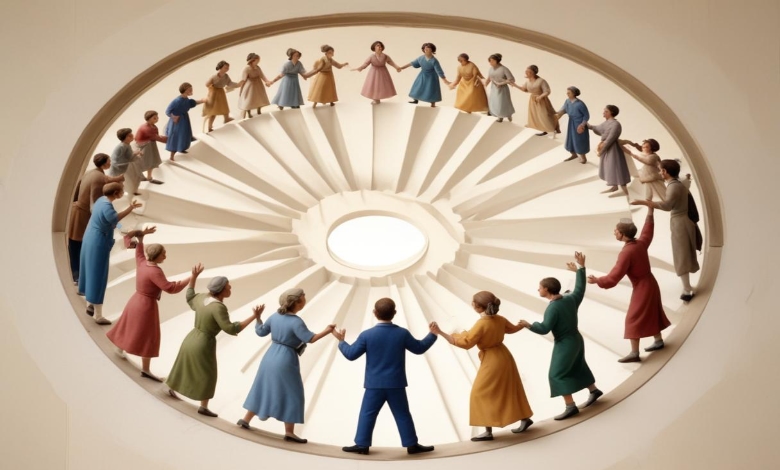Article index
A small anecdote, before talking about Belting!
Coming from a very aggressive genre, I have never been a lover of the musical theater.
One day I was in a water park where they gave musical shows and I thought of bringing my children.
Take a place, and at the end of this show we were all moved and excited for the pure performative beauty of those boys and girls (performers ... they are called in the musical) who danced, recited and sang every two hours, under that hot tent.
Since then, my idea on the subject has changed a lot.
 The most questionable quality of the musical is undoubtedly Belting.
The most questionable quality of the musical is undoubtedly Belting.
In practice, Belting is a super voice of forced chest, brought a little beyond the passage, covered with nasalized and medious sound (the twang) to download the cronged work and obtain projection.
All this would be possible thanks to the inclination of the cricide (the cartilage ring on which the larynx is resting and binds).
This inclination would cause a thickening of the rope with a consequent increase in glitter contact time and therefore, greater resistance to the air flow.
I don't know you, but every time I tried to do it, I was unrefuriously began to toss out of the clutch of the arrestoids.
In Stroboscopy, in fact, Belting is characterized by other emissions (especially from the mixed voice) for the attitude of the arrestidals that add to the massive and then rise, pushed posteriorly and at the top from the inclination of the cricide - in the first article I explained to you Instead, what happens "stroboscopically" in the mix (standard or extreme).
"A Belt Voice Can Be Mixed or Not and a Mixed Voice Can Be Belted or Not".
Terminology and comparison between Musical Theater and Modern Singing.
Belting is one of the three vocality that are requested in the musical; The other two are the Legit (a sort of Old-Style 1950s singing in Belcanto), and the recitative.
Unfortunately, however, terminology in the musical is not reduced only to these three terms. In fact, the same varies a lot, perhaps more than in modern singing.
Through my contact person Adriano Scappini, I was able to collect various comments from some artists and schools from Sidney to Broadway, passing through London.
Many terms are synonymous, but others have flourished by real need for coaching. A testimony in the survey carried out, explains the terminological ambiguity better: "A Belt Voice Can Be Mixed or Not and a Mixed Voice Can Be Belted or Not". Equally interesting was to note that the term Belting is quoted less than what we think or even, it is never mentioned! It seems that the term Belting is used more in Europe.
In America the term Belt Voice seems more widespread, with two meanings: standard Belt and High Belt depending on whether you sing up to Re4 or beyond.
In the Extreme Mix Voice terminology we could assimilate them to the standard mix and the extreme mix, even if the terminological focus are different: in the musical we refer to the point of extension; while in the EMV® methodology we refer to the sound-sound behavior.
What does this have to do with this article?
Feel this.
According to our investigation, it would seem that the term mix, widely used in the musical, identifies mostly emissions in Mixed Voice in M2, that is, a falsetto mix; Contrary to what happens in modern singing, where the term mix is instead associated with emissions in "Mixed Voice in M1", that is, a mix in full voice.

So in the musical theater, the mixed voice in M1 how is it called?
It is called Belt (Standard Belt - under a certain note - or High Belt - above a certain note).
Therefore, we could say that the term Belt Voice, in use in the musical theater , is assimilable to the concept of mix in modern singing, since both emissions are attributable to a Mixed Voice in M1.
In conclusion, the mixed voice seems to be terminologically treated in two distinct ways depending on the environment.
In the musical, the term mix is mostly associated with an M2 (the same legit is in fact on a M2 basis), in modern singing instead, the term mix is mostly reported to the management of the full item (M1) beyond the passage, Which must be "lightened" if you want to stop screaming, obtaining greater extension.
Lly, however, does not mean light !!! Something is lightened that in itself is mechanically heavy!
It is from this misunderstanding that the misleading didactic indications emerged, in my opinion. In fact, if we work on a mechanically light voice with lightening techniques, we will only enhance its M2, structuring it definitively.
But we resume our path of imagination.
Since, I would like to lead you to a reflection, which passes through terminological ambiguity and comes to propose an educational solution.
Let's imagine that a dance/singing company and a theatrical find themselves in a theater in the late nineteenth century and ask themselves: “And now? What do you do? ".
An agreement is born aimed at bringing to the public ballads, recited, sung, in a non -classic way, but in places, theaters, where certain resonances allow audibility to classic singing and certainly not to an unprotected voice.
Let's imagine that the microphones were not available.
What would you do to "bring" the voice at least to the third session, considering that the text must be clear and intelligible?
You too would scream, would you push and project simultaneously, like me? Noooo ... not like me!
Because I really don't know how to do it, a little by morphology and a little for the rigid education that I received in "do not raise my voice"; But whoever succeeds, is also because they are morphologically predisposed to do it.
I am not ... with thin strings, exposed capillaries and always present reflux. Do we imagine that at some point in the story the microphones arrive and these are even positioned very close to the mouth, in your opinion, knowing how to push "often" Belting, would it continue to maintain this thickness taking into account the hundreds of replicas expected?
 I guess very few! Also because it is one thing to project beyond the third session, and it is one account to project to a microphone on the side of the mouth or forehead.
I guess very few! Also because it is one thing to project beyond the third session, and it is one account to project to a microphone on the side of the mouth or forehead.
This perspective changes the need for the "thickness" of this Belting by converting it into a mixed mix or maybe, in Belt Voice, a term that I remind you in the musical, it is used to identify a mixed voice in M1 both standard and High. A more attentive listening of some alleged Beltists (or Belters) of today, has highlighted how these performers most likely emit in a sort of extreme mixed mix, and not in Belting.
Not surprisingly, paradoxically, I myself step by "Belter", but in reality they are "stroboscopically" speaking, an "extremer".
One of my students in particular, passes through Belstist and is chosen as the protagonist in some representations, but in reality, she is also in extreme mix (stroboscopically proven).
I want to specify, however, that these two emissions can be very similar, even to an expert ear, so much so that the extreme mix to be investigated, needs tools with SPL at least 144 dB, as very powerful and full of moderate singing formant (lyrical); So, it is also natural that you pass for Belting or Belt Voice.
Now I'll explain the purpose of this article, which is also the basis of an educational research that I coordinated with many professionals in the sector.
There are really many young people today with skill in dance and acting, but who, not having this beautiful "often", are very difficult to make a career.
The extreme mix unlike the most "morphological" Belting, it is acquired through precise teaching and can safely replace the Belting.
This is because, dear reader, to the insiders, whether it is Beling or extreme mix, does not seem to import much.
The sound that has to hover on stage must be unequivocally - and here they command the vocal coaches of musical and repertoire - powerful and sharp! They are not interested in what happens in strobe; They are interested in the vocality and the right attitude, to be approached to that character or the other.
And if there is a teaching to learn it, all the better! How come? Because so you could "recover" many very good dancers, actors with a good mixed voice in M2 (legit), but which do not have the power of the mix in full voice. A substantial difference remains: extreme mix is projection, while Belting is push. We summarize some typical characteristics of these two emissions
Stroboscopy: in strobe the two emissions are very different.
The extreme mix is based a hypertonic interest false cordale "tame" by a specific standard mix © procedure which involves first, and then keeps the false ropes at a distance, while in Beling an rising of the arrestoids caused by the inclination of the cricoid is visible .
Extension: Belting has a very reduced extension (some tone above the transition to the limit of the acute chest voice); While the extreme mix offers a large extension in full voice and even greater power.
Vibrato: In the extreme mix the vibrated is controlled rhythmically, while in Beling it takes goat connotations or in any case stretched due to the intrinsic and extrinsic activity very high. I just hope that this story can return some hope to those who know that they can never emit "often" like me.
Read also the article: do you know what Mixed Voice is, also called mix?








